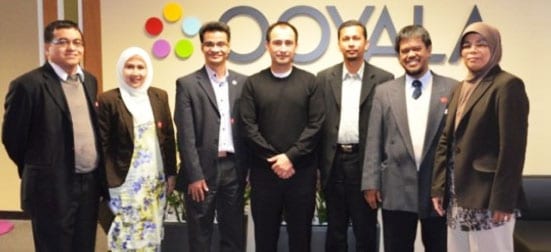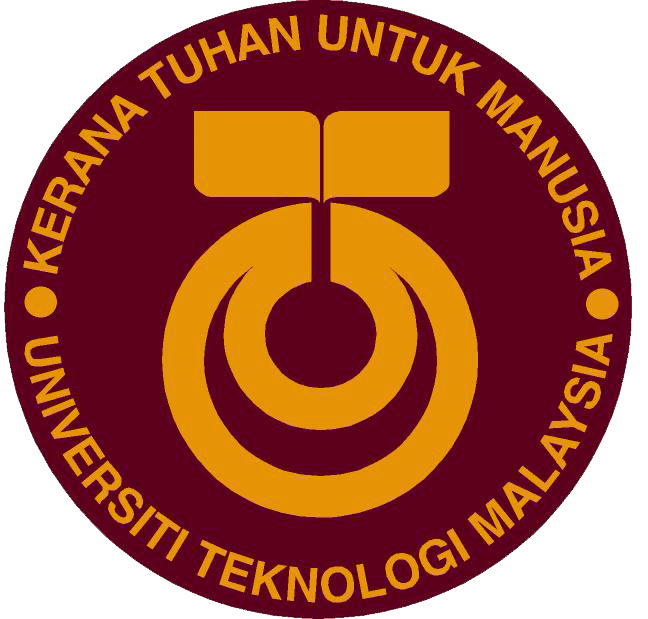Universiti Teknologi Malaysia (UTM) is taking another step forward to become an Entrepreneurial Research University. The collaborative effort is aimed to ensure that UTM stays relevant and competitive as the country’s top and leading technological based university (Assoc. Prof. Dr. Arham Bin Abdullah, Deputy Director of ICC, UTM – December, 2011).
Recently, UTM has sent a group of delegates to SRI International, Menlo Park, California, USA which consists of potentially entrepreneur-researchers and coordinating officers to get more exposure on what is arguably the best start-up environment in the world: Silicon Valley besides fulfilling a part of the UTM-SRI International Venture Readiness Program (VRP) objectives which was planned since December 2010.
The professional collaboration between the two institutions has been spelled out in an agreement signed on the 19th of April 2011 located at Impiana Hotel, KLCC. It is believed that this effort will benefit UTM’s most promising research products and teams in commercialisation strategies.
By engaging with SRI since 2010, UTM personnel have participated in various executive briefings and programs for researchers and staff, starting with the first twenty seven (27) UTM researchers and staff who were trained in the SRI’s 5DOI, partially through AKEPT sponsorship.
Several research teams were trained to pitch their value propositions in extended “venture capital like” sessions. These sessions have benefitted many UTM research teams, officials and staff.
In addition, by forming this partnership, several UTM products will be exposed to the real SRI International commercialisation and Silicon Valley environment in Menlo Park, California, USA.
This strategy is taken to advance selected UTM research teams from focusing only in research driven strategy towards development and commercialisation driven strategies.
At the end of this program, UTM hopes to generate sustainable and innovative technologies that have a higher probability of being successfully commercialized and to continue to improve its remarkable research and development capabilities.
The five days visit is more of a mind-opening ritual to the entrepreneurial ecosystem in Silicon Valley.
The delegate was brought on tour to several components in the Silicon Valley ecosystem started with SRI headquarter, a private incubator organization known as Plug and Play Tech Centre, a close discussion to a Chilean company that took part in the incubation program at Plug Play Tech Centre and visit to an independent start-up company, Ooyala Corp.
At every visit the entrepreneurship ethos of Need-Approach-BenefitsPerCost-Competitor (NABC) were spoken in many ways (Refer to 5DOI Module, SRI).
It emerged that for all the organizations, their innovations and products were initially aimed at fulfilling needs in the market. They emphasized that no company would survive if their product does not satisfy a need or solve an outstanding problem of the communities.
The final tour is focused on ecosystem built within Stanford University. The delegate was brought to several formal meeting in Bio-X Centre, Technology Transfer Office, and Design Centre.
The university’s Bio-X and Design Centre are not faculty based, but are designed to serve the whole university. The centre were envisioned to bring together multi-disciplinary faculty and students, so that their ideas can “meet” and the ecosystem would “incubate expansion and multiplication” of the initial ideas.
The whole of Bio-X Centre is designed for quick re-setting so that the whole building could accommodate any new changes really quickly. The Stanford University Design centre also was established to serve almost the purpose as Bio-X Centre.
The visit to the university’s Technology Transfer/Licensing Office (TLO/TTO) also revealed certain practices by the office in relation to the university’s researchers.
For instance, the TLO/TTO does not seek out technology disclosures from the researchers, and for those that did, the TLO/TTO would advise them on legal matters with respect to their patent application.
The office also does not prevent researchers from publishing their researchers. But for every disclosure, the TLO will look into the utility and market requirement for the technologies. And their incomes from the patents and other IP of the university only showed some significant income after about 15 to 20 years of the establishment of the TLO.
In summary, this visit has collected a lot of ideas especially on the setup of ecosystem to accelerate the effort to commercialize research and development product. As for the UTM communities, this new wave of improvement will bring substantial amount of benefits in variety of aspects.




